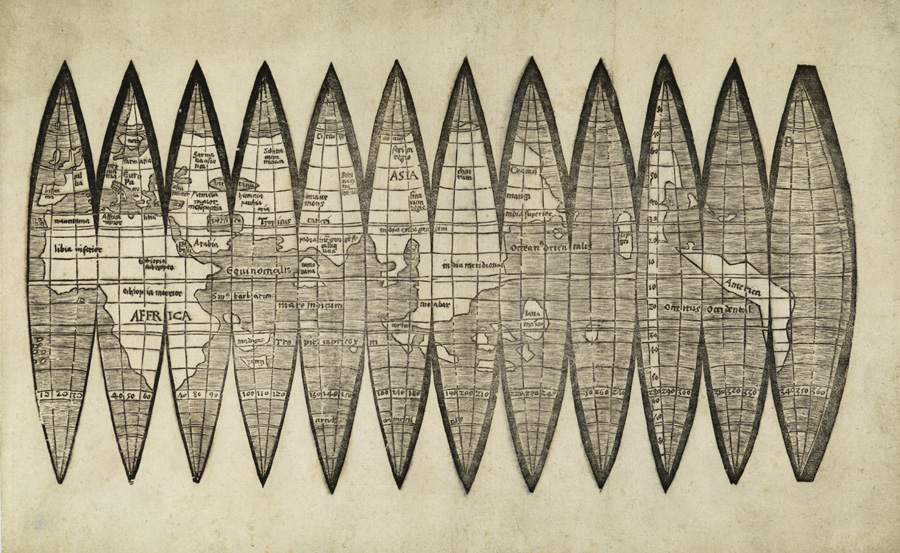At the Bell
the Waldseemüller Globe gores
The Bell Library's globe gores map is printed from a single woodblock on watermarked paper and measures 34 x 24 centimeters (15.35 x 9.44 inches). When cut out and pasted on a sphere, it would form a globe approximately 4.5 inches in diameter.

European mapmakers, as far back as Claudius Ptolemy (2nd century A.D.)
and earlier, knew that a globe was the most accurate way to portray the round earth.
One obvious drawback to the globe is its size. Waldseemüller’s globe is a good example, few details could be given on such a petite globe.
A small globe is easy to carry, but a detailed globe would be far too large to be portable.
Another practical problem: larger globes are awkward to view from the top and bottom.
For these reasons globes are best for a simple view of the world, and that is what Waldseemüller provided on his globe of 1507.
Globes have still another drawback: they are difficult to store and to protect from damage.
Waldseemüller probably printed his globe in an edition of over 1,000 copies. Of that entire printing,
only three copies have survived. None of them was ever shaped into a globe, they are flat,
in gores just as they were printed. Copies that were made into globes were no doubt chewed by dogs,
cats, or mice; played with by children or dropped in mud or destroyed by fire — and lost to history.
The thumbnails below link to enlarged sections of the 1507 map gores.
Take a look Under the Magnifying Glass!
 |
 |
 |
 |
 |




